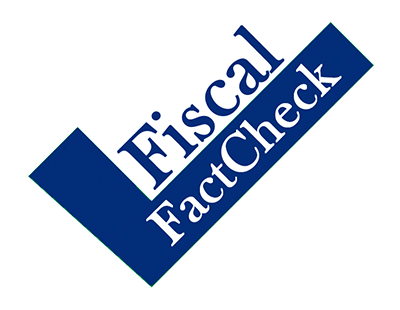Is Spending, Not Tax Cuts, Driving the Deficit?
The House Ways and Means Committee minority recently published a blog post claiming that "spending, not tax cuts, [is] driving national deficits." It argues that because revenues have increased since last year, deficits are only being driven by spending and not the 2017 Tax Cuts and Jobs Act (TCJA) cutting taxes. This is false. The TCJA will have added about $230 billion to the deficit this year and $1.9 trillion to the debt over the next decade, even accounting for a positive economic impact.
By definition, deficits are the disconnect between spending and revenue, so it is impossible to definitively say which is the driver. But by most measures, the answer is "both." As we showed recently, both spending and revenue are diverging away from their historical averages. And in recent years, policymakers have enacted legislation significantly increasing spending and reducing revenue.
The Ways and Means Committee minority argued that spending is the driver because "total receipts are up 3 percent in the first 10 months of this fiscal year." But nominal revenue growth between Fiscal Years (FY) 2018 and 2019 doesn't mean very much. The TCJA has been in effect for the majority of both those time frames, and 3 percent is smaller than the nominal growth rate of both the economy and the tax base.
Between tax year 2017 and tax year 2018, the first year when the TCJA was in effect, revenue fell by between 3.6 percent and 8.1 percent, depending on the measure. The 2017 tax cuts will add roughly $1.9 trillion to the debt through 2028 and have already reduced revenue to 16.3 percent of Gross Domestic Product (GDP) in FY 2019, its lowest level since 2012 when the economy was still recovering from the Great Recession. While the growth rate of revenue will pick up in the coming years, it will grow from a permanently reduced level (until the bulk of the tax cuts expire after 2025).
Perhaps more importantly, revenue today and going forward is much lower than it otherwise would have been. Prior to the TCJA, the Congressional Budget Office projected revenue to total $3.7 trillion and 17.8 percent of GDP in 2019. Revenue is now projected to total $3.5 trillion and 16.3 percent of GDP, which is $236 billion or 1.5 percent of GDP lower. That is despite a $26 billion increase in tariff revenue so far this fiscal year.
Revenue is unambiguously lower than it otherwise would have been absent the TCJA, and as a result, deficits are higher.
To be sure, higher spending is also driving higher deficits. Spending is projected to grow by 16 percent, or 0.3 percent of GDP, between 2017 and 2020. Rising health and retirement costs are projected to lead to continued spending growth, while the recent Bipartisan Budget Act of 2019 increased spending by more than $150 billion per year compared to what it otherwise would have been.
But arguing that tax cuts have not contributed to high and rising deficits is incorrect.



